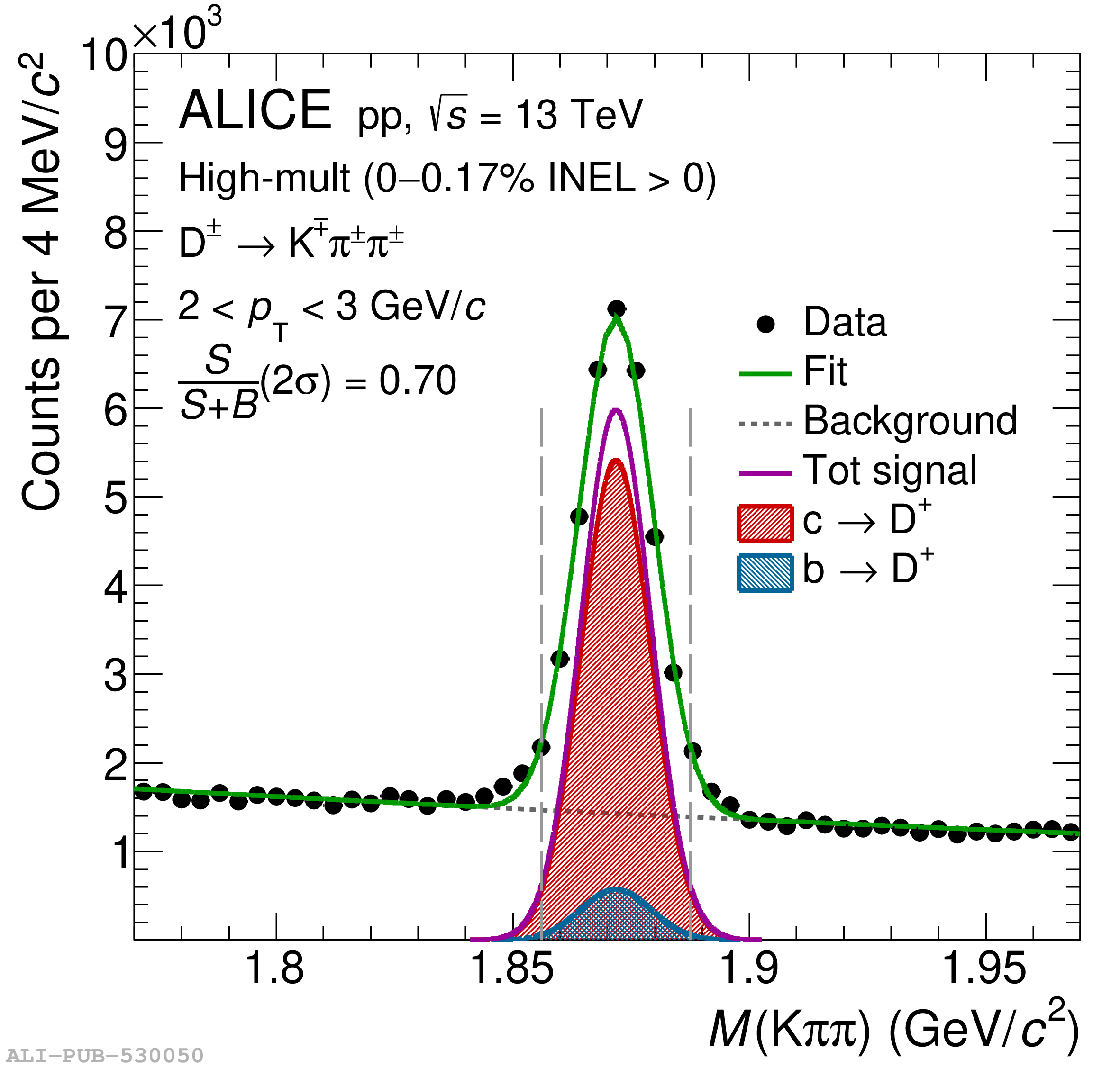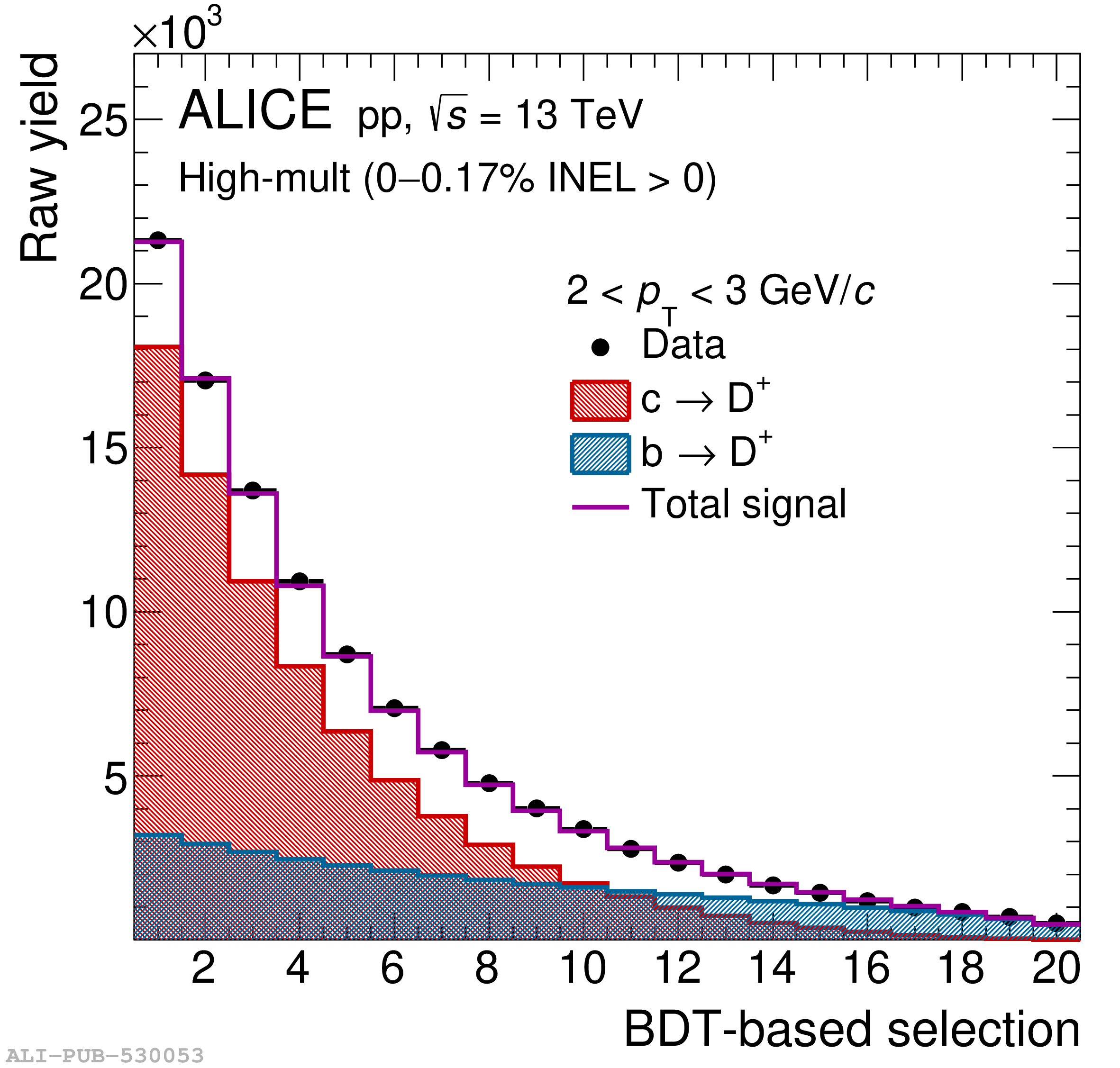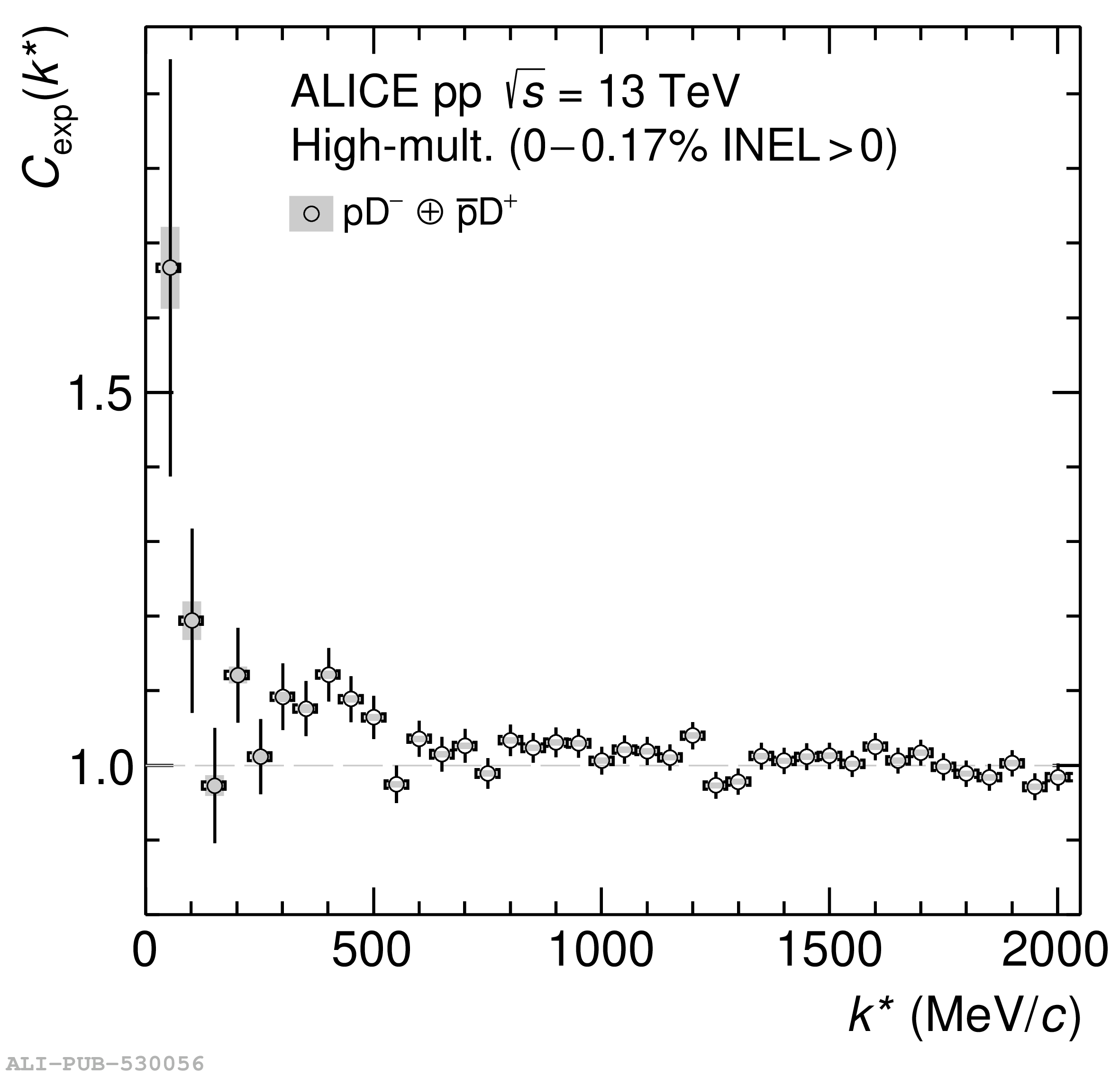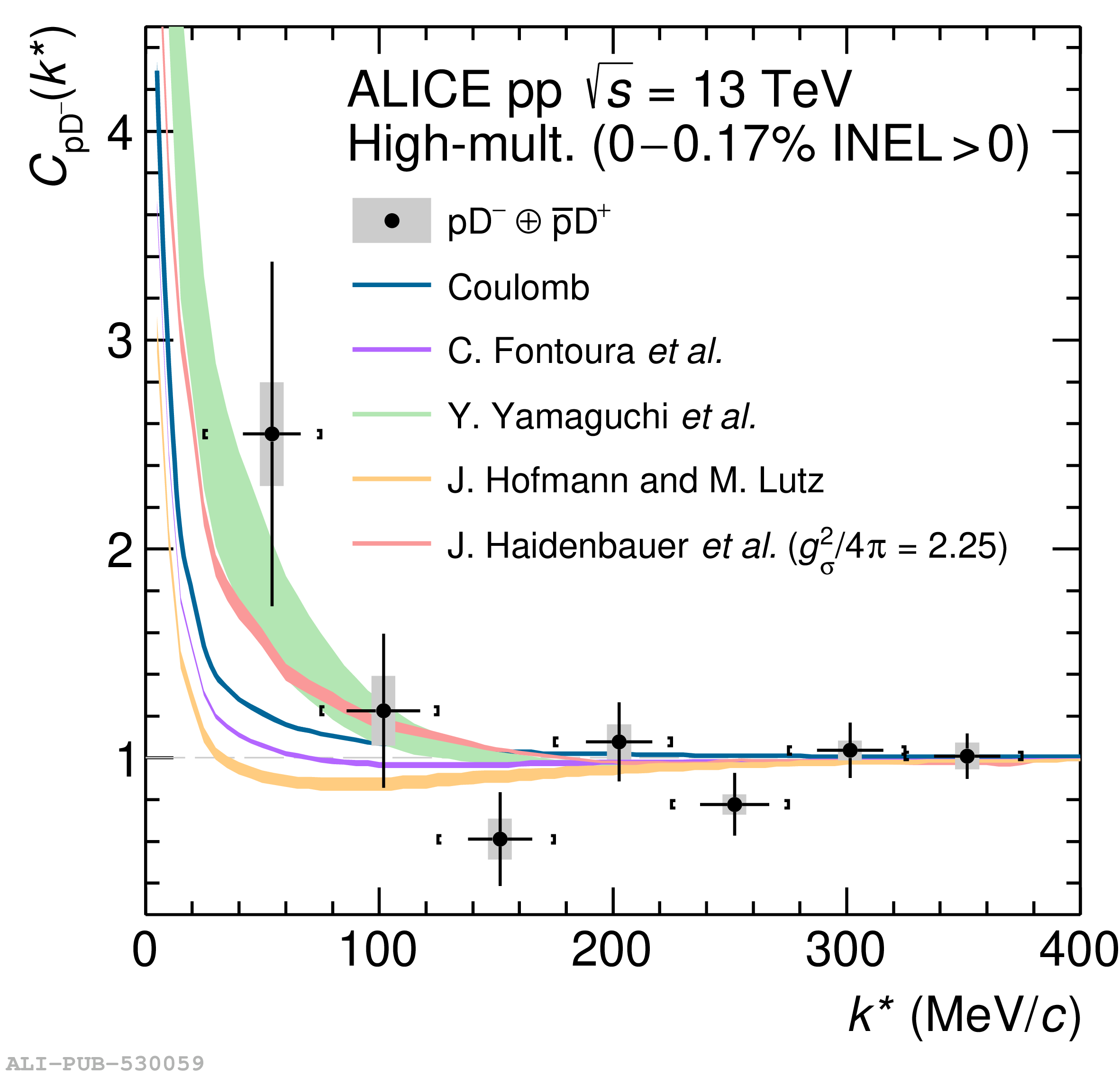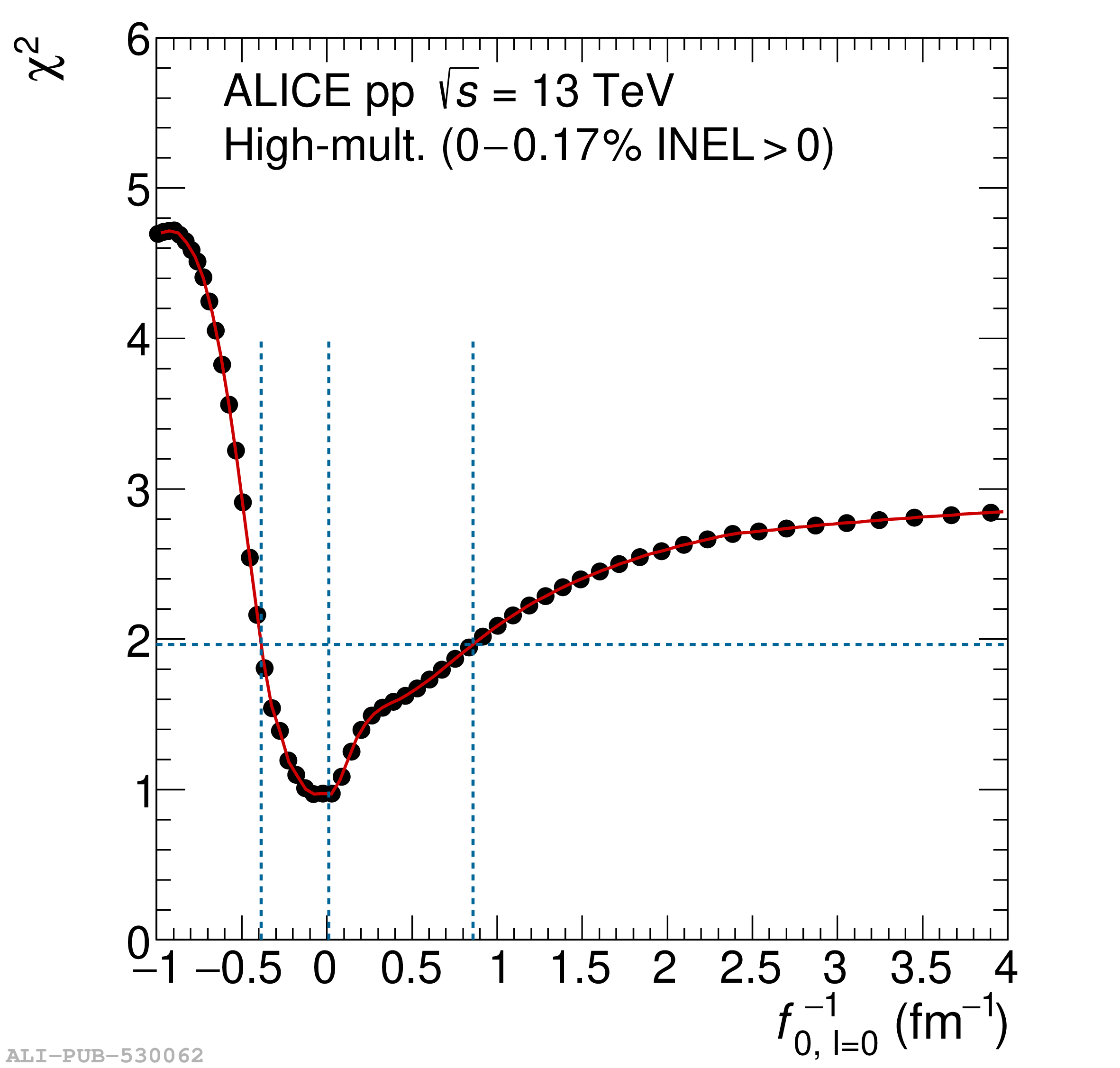This article presents the first measurement of the interaction between charm hadrons and nucleons. The two-particle momentum correlations of $\mathrm{pD^-}$ and $\mathrm{\overline{p}D}^+$ pairs are measured by the ALICE Collaboration in high-multiplicity pp collisions at $\sqrt{s} = 13~\mathrm{TeV}$. The data are compatible with the Coulomb-only interaction hypothesis within (1.1-1.5)$\sigma$. The level of agreement slightly improves if an attractive nucleon(N)$\overline{\mathrm{D}}$ strong interaction is considered, in contrast to most model predictions which suggest an overall repulsive interaction. This measurement allows for the first time an estimation of the 68% confidence level interval for the isospin $\mathrm{I}=0$ inverse scattering length of the $\mathrm{N\overline{D}}$ state ${f_{0,~\mathrm{I}=0}^{-1} \in [-0.4,0.9]~\mathrm{fm^{-1}}}$, assuming negligible interaction for the isospin $\mathrm{I}=1$ channel.
Phys. Rev. D 106 (2022) 052010
HEP Data
e-Print: arXiv:2201.05352 | PDF | inSPIRE
CERN-EP-2022-006
Figure group

